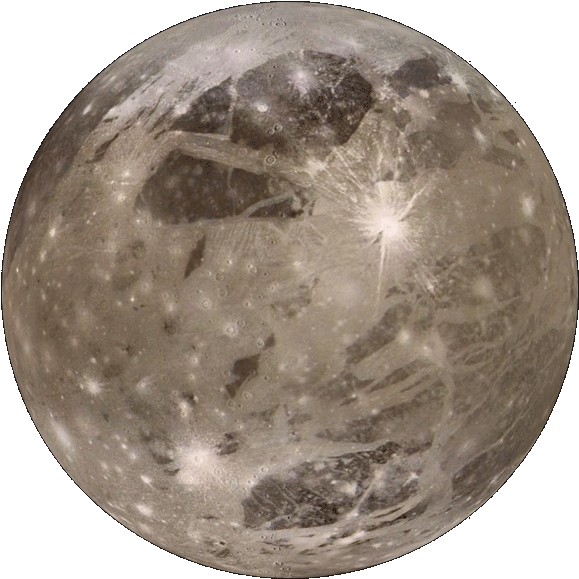ganymede
Ganymede is the largest moon in our solar system and the only moon with its own magnetic field. The magnetic field causes auroras, which are ribbons of glowing, electrified gas, in regions circling the moon’s north and south poles. Ganymede has large, bright regions of ridges and grooves that slice across older, darker terrains. These grooved regions are a clue that the moon experienced dramatic upheavals in the distant past. Scientists have also found strong evidence of an underground ocean on Ganymede.
Ganymede is named for a boy who was made cupbearer for the ancient Greek gods by Zeus – Jupiter to the Romans.
Ganymede has three main layers. A sphere of metallic iron at the center (the core, which generates a magnetic field), a spherical shell of rock (mantle) surrounding the core, and a spherical shell of mostly ice surrounding the rock shell and the core. The ice shell on the outside is very thick, maybe 800 km (497 miles) thick. The surface is the very top of the ice shell. Though it is mostly ice, the ice shell might contain some rock mixed in. Scientists believe there must be a fair amount of rock in the ice near the surface. Ganymede's magnetic field is embedded inside Jupiter's massive magnetosphere.

